Rehousing the American Book Company Illustrations
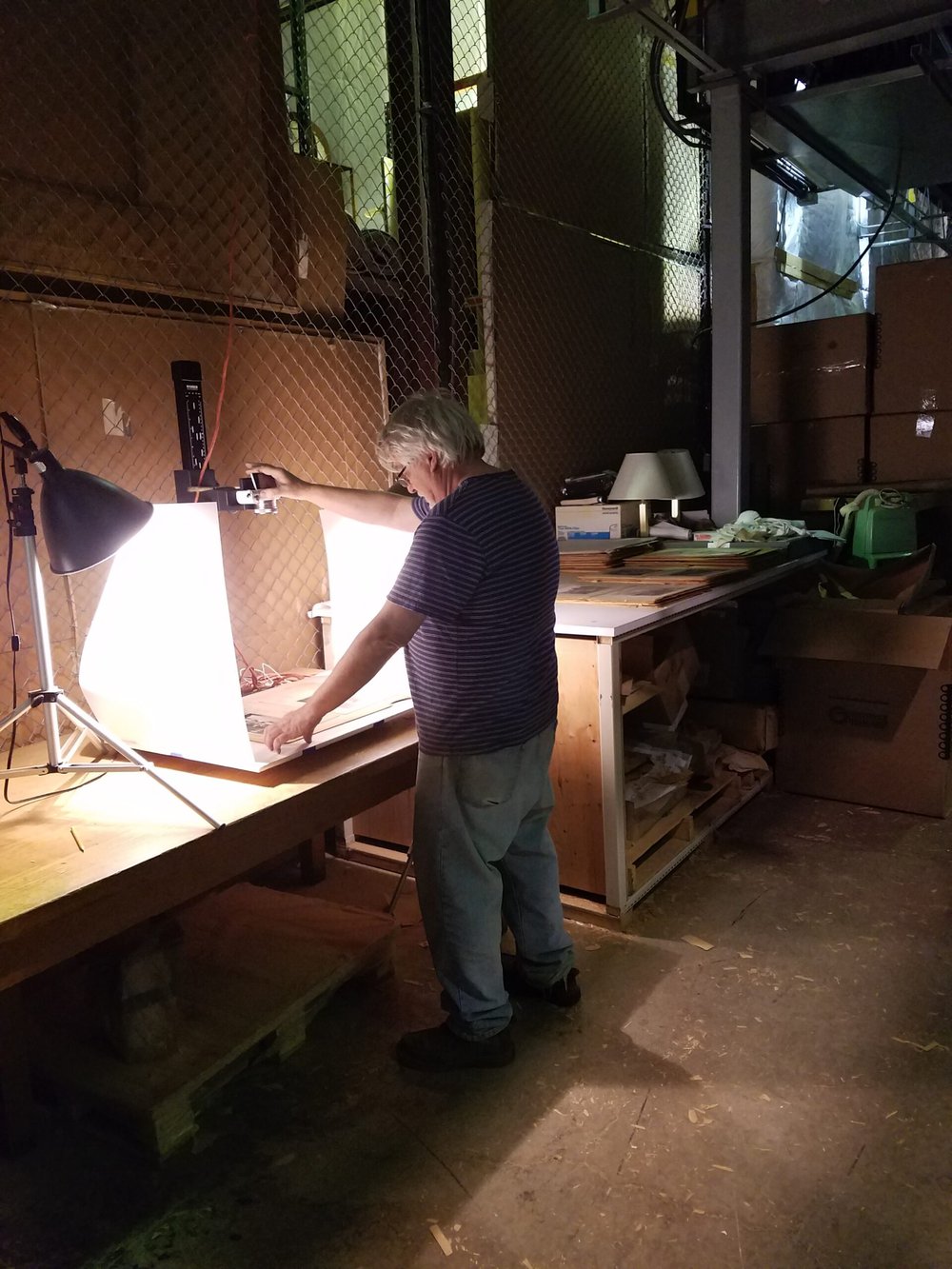
by Sebastian Modrow, Curator of Rare Books and Manuscripts
From 2016 to 2017, Syracuse University’s Special Collections Research Center engaged in a massive preservation project. The task was to rehouse and increase the intellectual control over approximately 17,000 plates used as textbook illustrations by the American Book Company, one of the leading American schoolbook publishers of the 19th and early 20th centuries. This illustration material comprises drawings, paintings, photographs, and prints that are mostly glued down to large pieces of acid-bearing illustration board, with handwritten annotations, captions, and corrections. The 931 original packages containing the oversize plates were in storage for over three decades. In 2016, SCRC decided that something had to be done no matter how daunting the task.
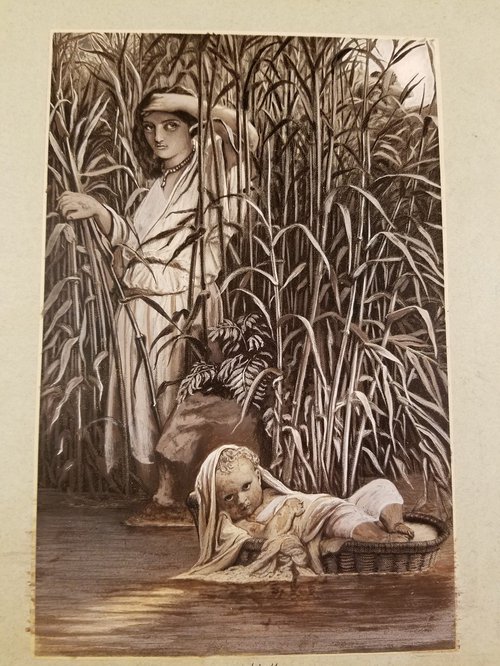
Example of a plate with original artwork mounted on illustration board
The American Book Company and its Illustration Collection
The American Book Company proper came into being in 1890 after a merger of four publishing companies: Van Antwerp, Bragg and Co., A.S. Barnes and Co., D. Appleton and Co., and Iveson, Blakeman and Co. The major focus of the company was pedagogical textbooks on everything from accounting, agriculture, and art to civics, foreign languages, history, music, science, literature, mathematics, penmanship, and various levels of reading primers. Its most successful product was the McGuffey Readers, a series of school primers that sold 120 million copies between 1836 (under Van Antwerp, Bragg and Co.) and 1960 (under the American Book Company). One result of the company’s long success story was an archive of book illustration plates. While some plates contain line art or “stock” photographs, many contain original artwork, the artist list of which reads like a Who’s Who of early American illustration history, featuring names such as Winslow Homer, Norman Rockwell, Frederick Remington, Thomas Moran, just to name a few of the most illustrious ones.
As impressive as the number and quality of the original illustrations in Syracuse University’s American Book Company Records are, they still represent only a fraction of the total artistic output of the publisher and its various predecessors: A warehouse fire in ABC’s Broadway location around the year 1900 destroyed most of the 19th century illustrations and engravings. Other parts of the ABC illustration collection were donated in 1949 and 1950 to the New York Public Library and became part of its Picture Collection.
After a series of mergers, the American Book Company K-12 assets were sold to D.C. Heath and Company in 1981, which marked the end of the American Book Company imprint.
Moving to Syracuse
In 1964, as part of a larger acquisitions campaign, Syracuse University Library’s Manuscript Administrator H.L. Applegate approached the American Book Company about a potential transfer of its records to Syracuse University. An agreement was reached and the greater part of the material from Cincinnati and New York City was shipped to Syracuse University’s Special Collections in 1967-68.
Preservation Issues and Measures
Despite Applegate’s more than optimistic promise to ABC’s Senior Vice President “to make the processing and arranging of the American Book Company archives a major summer project” [emphasis added], the processing of a collection of this scale and material diversity proved to be a far greater challenge than anticipated. Excluding the drawings, the contents of the collection, consisting of general correspondence, calendars, business records, books, miscellanea, illustrations, and study charts, were processed by 1978. The still unprocessed artwork amounted to 931 packages of plates, all still in their original acidic wrapping paper in the Special Collections backlog. But how to tackle almost a thousand packages?
With a collection of this size, the only viable option appeared to be to rehouse and interleave the boards. The use of archival quality oversize boxes and of acid-free interleaving paper and their transfer to Syracuse University Libraries’ state of the art storage facility will now at least slow down the degradation of the original artwork.
The job occupied two SCRC staff members almost full time for over a year. By the project’s end, the original artwork series of the American Book Company Records spread out over 1,200 oversize boxes, bringing the total collection size up to 3,313 linear feet of shelf space!!
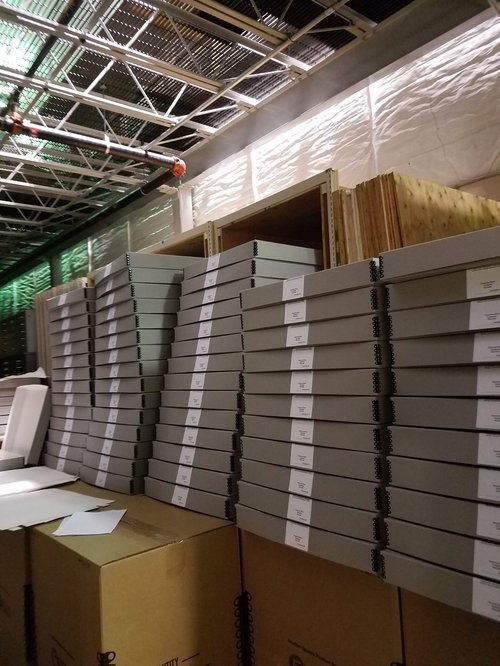
The artwork’s new home: A part of the 1,200 archival quality empty oversize boxes ready to be filled
But what about access?
One issue that rehousing alone would not alleviate is that of access to the material. In order to provide access efficiently, you need a certain level of intellectual control over a collection. The rehousing project offered the unique opportunity to check the actual content of the packages against the old high-level inventory list in order to reestablish the plate number sequence where it was disturbed – by use of enormous sorting shelves – and to create a new more accurate inventory spreadsheet listing the individual plate numbers contained in each oversize box and the respective topic or genre of the material (e.g. United States History, Science, Reader, Primer, etc.). These updates would offer both researchers and staff at least some guidance when browsing the material in the finding aid.
Two challenges remained, however: First, how could a researcher preselect the relevant plates and avoid ordering large quantities of oversized boxes from an offsite facility? A lack of detailed description not only places a strain on a researcher’s time but also increases the wear and tear on the collection overall, as it forces each researcher to physically handle large quantities of material in order to find the few items relevant for a research project.
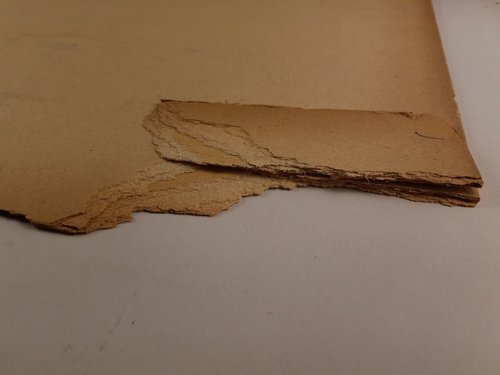
Over the years, the acidic illustration board has become incredibly brittle
Second, when the rehousing team began unwrapping the original artwork, they found the majority of the plates in such a fragile state that access restrictions would seem to be the only way to prevent this collection from being ‘used to pieces.’ The only feasible solution in the midst of a rehousing project of this magnitude was the addition of ‘quick and dirty’ digitization to the workflow. In order to do this, the team set up an impromptu photo lab in the warehouse on one of the processing tables. Each plate, after being freed from the old acidic wrapping paper, and before it was interleaved and put on the sorting shelf, could be photographed with minimal investment of time and without any extra wear and tear to the material.
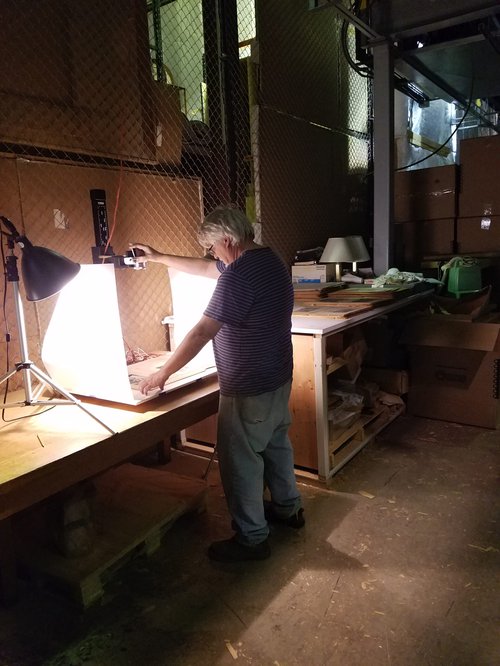
SCRC staff member Paul Barfoot at work in the impromptu photo lab
The result of this thorough rehousing and quick and dirty digitization project is a complete photo-documentation of the original ABC artwork at Syracuse University’s Special Collections Research Center. While the lighting in the warehouse and the process of the rehousing project photography did not allow for the creation of publication quality images, the results of this ‘quick’ makeshift solution were actually not that ‘dirty’ after all. The images were produced at a resolution high enough to answer most of the questions a scholar or course instructor might have, without needing to handle the fragile originals. This simple and not-at-all invasive or time-consuming modification of the rehousing workflow created a potential for virtual research and instruction that the fragile originals would never survive.
The last, but essential and more time-consuming, piece in this discovery-and-access puzzle is, of course, the creation of descriptive metadata. Without this, the newly created terabytes of artwork photographs would remain as inaccessible as the originals. Since 2018, the Special Collections Research Center has been offering descriptive metadata internships aimed primarily at Library Science, Museum Studies, or Art History graduate students, helping them develop a skillset that is in high demand in their respective fields today. During the internship, students populate various metadata fields in SCRC’s home-grown METS Manager interface, including a standardized content description narrative and thereby – one image at a time – create the access points needed to turn this photographic documentation into a virtual research and teaching resource. Previous internships, as well as the research of SCRC’s former Chief Curator Andrew Saluti, have already brought to light some amazing early artwork of later-to-be-famous American artists Norman Rockwell, Thomas Moran and others.
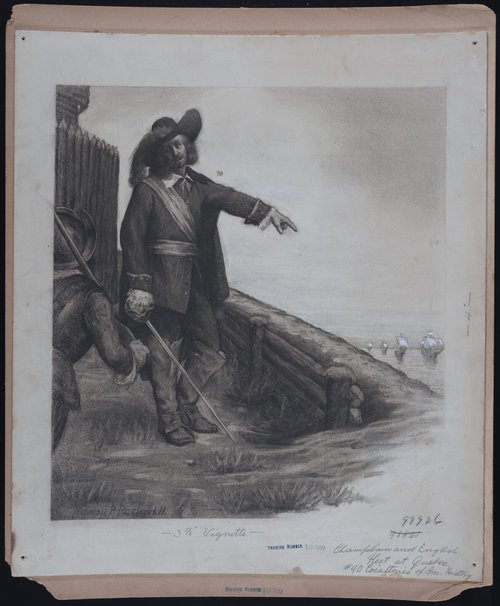
An early Rockwell ‘unearthed’ from the collection by SCRC’s former curator Andrew Saluti
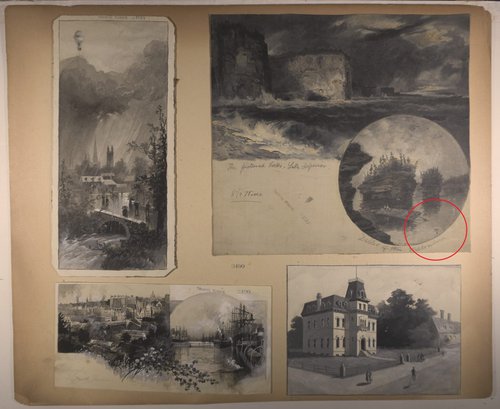
A Thomas Moran identified by an intern during the metadata creation process
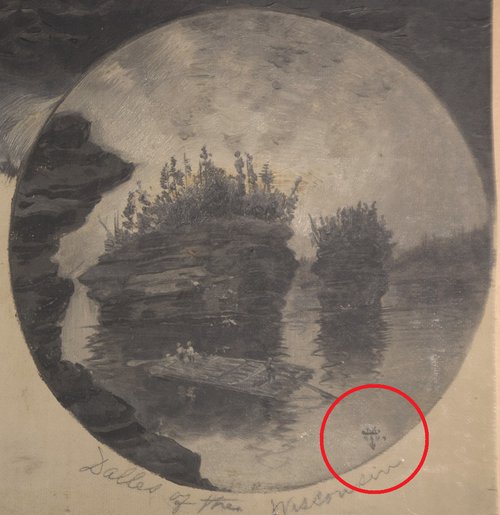
A closeup of Thomas Moran’s signature on the identified drawing
So far, 2,674 of the approximately 17,000 images have been described, an ongoing process that is still years away from being completed. What started out as a daunting rehousing project will, when completed, provide the academic community and the interested public with an incredible virtual research and teaching collection related to America’s history of illustration and public education. Fingers crossed!
The American Book Company Records (American Book Company Records, Special Collections Research Center, Syracuse University Libraries) are part of the Special Collections Research Center’s manuscript collections.
